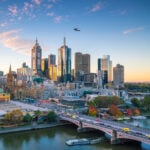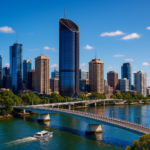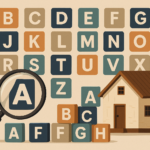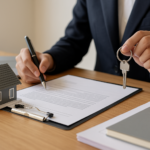
Key takeaways
In our increasingly vertical cities, outdoor space has quietly become one of the most valuable features in apartment living, and many buyers are paying a surprising premium for it.
Apartments in Brisbane see the highest price jump for balconies, costing an additional $393,937 on average.
Sydney followed closely behind with a price discrepancy of $363,198.
Balconies were found to decrease the value of an apartment in Perth, plummeting by $33,203 on average.
In our increasingly vertical cities, outdoor space has quietly become one of the most valuable features in apartment living, and many buyers are paying a surprising premium for it.
A recent analysis from Woodbury Furniture reveals something property investors should take seriously: Australians are paying as much as $390,000 more for apartments that include a balcony.
Yes, you read that right.
A few extra square metres of outdoor space could cost you nearly $400,000 more in some cities.
And when you dig into the numbers, you’ll see this isn’t a one-off anomaly, it’s part of a broader shift in how Australians are valuing lifestyle features in their homes.

Outdoor living is no longer just a “nice to have”
Balconies have always been considered a bonus, but they’ve now become a priority.
In fact, the study found that nearly one in four apartments in major cities are being built without a balcony, and buyers are pushing up prices for those that do.
This is particularly relevant in a post-pandemic world, where we've come to appreciate the benefits of fresh air, natural light, and a private outdoor retreat—especially in high-density areas where green space is limited.
Chris Catinaro, an interior design expert from WoodburyFurniture.com.au, puts it well:
"Balconies have evolved into "essential components of a well-designed home contributing to the feeling of space, improving air flow, and enhancing daily comfort."
For many apartment dwellers, a balcony isn’t just a design element, it’s an extension of their living space.
And in a competitive market, it can make all the difference between a listing that lingers and one that sells quickly at a premium.
What’s the price of a balcony in each capital city?
Let’s take a closer look at what the research uncovered.
The study analysed apartment listings with and without balconies across five major cities.
Here’s what they found:

Source: Woodbury Furniture
1. Brisbane – Average premium: $393,937 (+46.4%)
Brisbane tops the list, and it’s not hard to see why.
With its subtropical climate and year-round outdoor culture, a balcony is often seen as a necessity, not a luxury.
In many cases, it becomes an informal second living area.
2. Sydney – Average premium: $363,198 (+19.2%)
Sydney’s property prices are already elevated, but add a balcony and you’re looking at nearly $400K more in some cases.
Given the city’s density and limited private open space, balconies are often the only way to connect with the outdoors.
3. Adelaide – Average premium: $95,320 (+16%)
Adelaide’s strong lifestyle culture, especially around outdoor dining and entertaining, makes even a modest balcony desirable.
That said, the city’s lower density and pricing base mean premiums aren’t as steep as the East Coast capitals.
4. Melbourne – Average premium: $46,777 (+7.5%)
Melbourne’s cooler climate and wealth of public parks reduce the day-to-day reliance on private balconies.
Still, there’s a clear uplift for homes with outdoor space, particularly in inner-city areas where space is tight.
5. Perth – Average discount: -$33,203 (-4.85%)
Perth is the outlier.
Here, buyers appear to place less value on balconies, likely because larger apartments, access to land, and more generous outdoor zones are the norm.
When outdoor yards or alfresco areas are common, balconies don’t carry the same appeal.
What does this mean for property investors?
For seasoned investors, this data isn’t just interesting, it’s actionable.
As more Australians trade backyards for balconies and courtyard in apartments outdoor space is becoming a key differentiator in tenant appeal, resale value, and long-term capital growth.
In cities like Sydney and Brisbane, where density is increasing and urban sprawl is restricted, balconies are likely to retain or even grow in value.
If you're targeting high-demand rental markets, a well-positioned apartment with a usable balcony can command higher rents and attract more discerning tenants.
It also becomes more resilient during downturns, when lifestyle features become points of competition among similar properties.
But be selective. Not all balconies are created equal.
A tiny concrete slab facing a brick wall won’t carry the same value as a usable, private, well-oriented space with views or sunlight. Quality matters.
And in places like Perth or parts of outer suburban Melbourne, a balcony may not deliver the return on investment you expect.
In those markets, buyers are often more focused on land, gardens, or outdoor entertaining areas at ground level.
Final thoughts
Balconies are fast becoming one of the most valuable square metres in modern Australian real estate.
In a world where space is shrinking and lifestyle expectations are rising, those few extra metres outdoors are no longer just a bonus, they’re a competitive advantage.
And as cities get denser, they may well become one of the key drivers of apartment capital growth.
So, whether you’re buying, selling, developing, or investing, don’t underestimate the power of a balcony.
It could be the feature that sets your property apart in a crowded marketplace—and justifies a premium price tag along the way.














